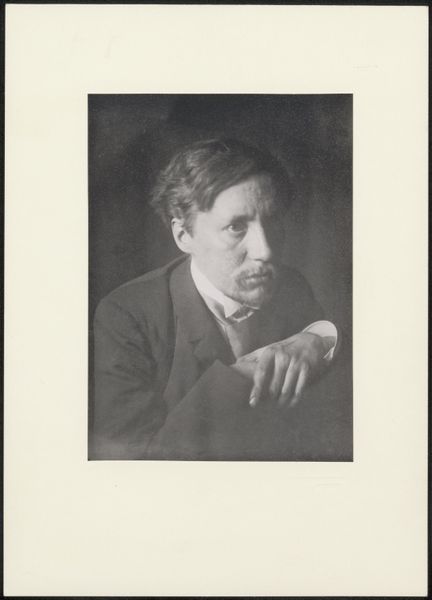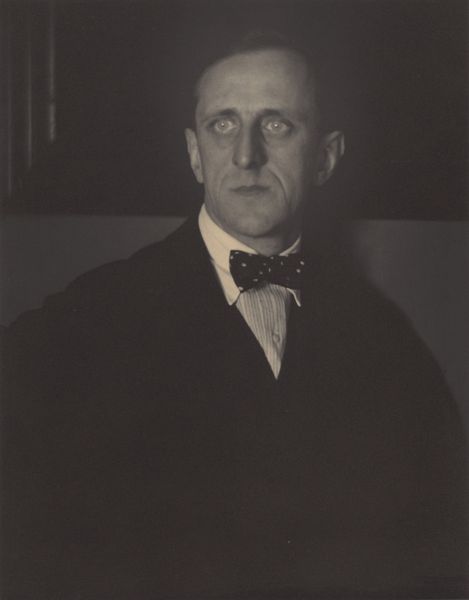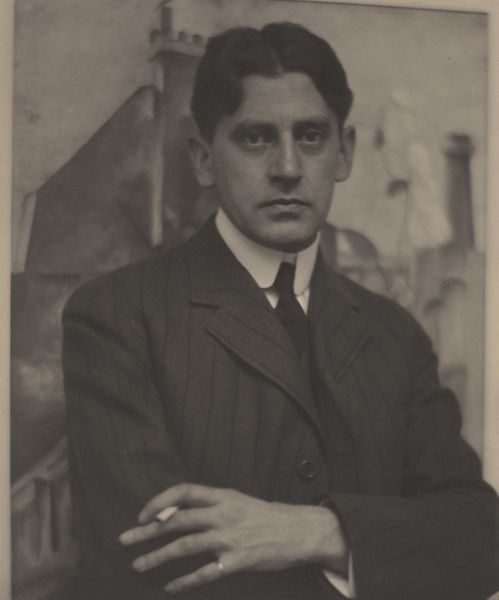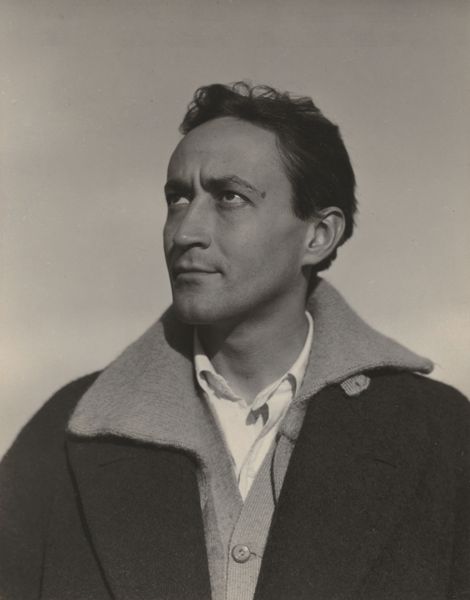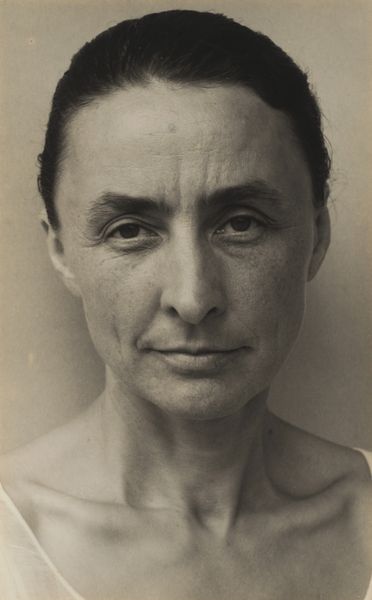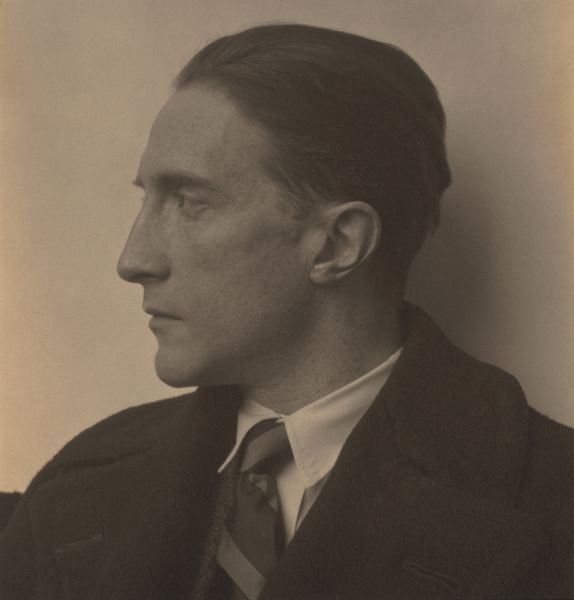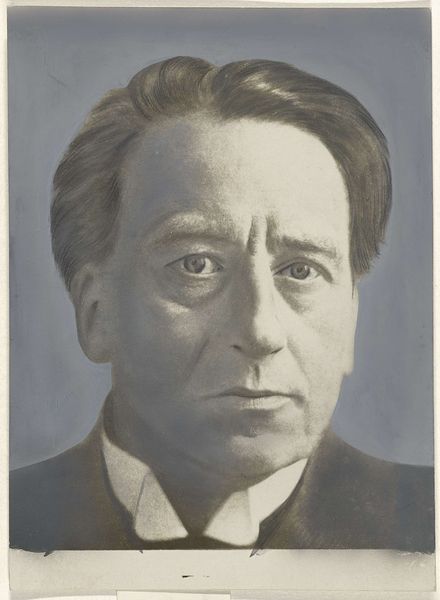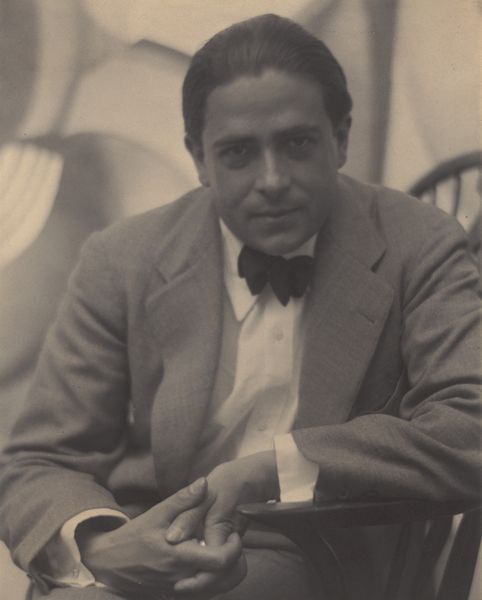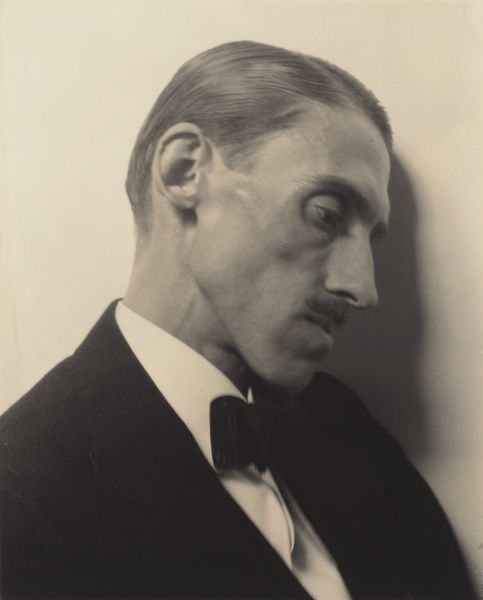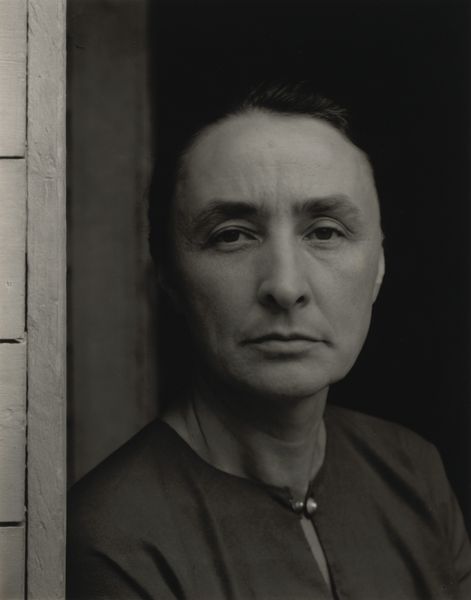
photography
#
portrait
#
pictorialism
#
portrait
#
photography
#
modernism
#
realism
Dimensions: image (Stieglitz window mat): 22.3 × 17.4 cm (8 3/4 × 6 7/8 in.) sheet: 25 × 20.2 cm (9 13/16 × 7 15/16 in.) mount: 56.6 × 46.4 cm (22 5/16 × 18 1/4 in.)
Copyright: National Gallery of Art: CC0 1.0
Editor: This is a photograph, simply titled "Marcel Duchamp," taken in 1923 by Alfred Stieglitz. I'm immediately struck by its contemplative mood. Duchamp is looking away, almost as if caught in a private thought. What do you make of it? Curator: It feels like peeking into Duchamp's inner world, doesn't it? Stieglitz wasn't just capturing a likeness, he was after something more, that slippery thing called "essence." Look at the soft focus, the way the light caresses his face…it’s almost as if Stieglitz is painting with light, sculpting the very idea of Duchamp. Does it make you think about his readymades and how he challenged the very definition of art? Editor: Absolutely! It's a surprisingly intimate portrait, considering Duchamp's more detached, intellectual persona in his art. Stieglitz made him look so...vulnerable. Curator: Precisely. Think about what was happening in art then. This wasn’t just about a pretty picture, but exploring identity, perception. It's like Stieglitz is asking, “Who *is* this revolutionary artist?” He makes me feel like even in a portrait, Duchamp remains something of an enigma, even to himself, wouldn’t you agree? Editor: I think I do. The photo really captures that sense of mystery. It almost seems like Stieglitz isn’t giving us any answers, only adding another layer to Duchamp's mystique. I'll never look at readymades in the same light. Curator: Wonderful! That’s what art should do - open up new doors of perception, and then make you wonder whether you are even in the same building to start with!
Comments
No comments
Be the first to comment and join the conversation on the ultimate creative platform.
